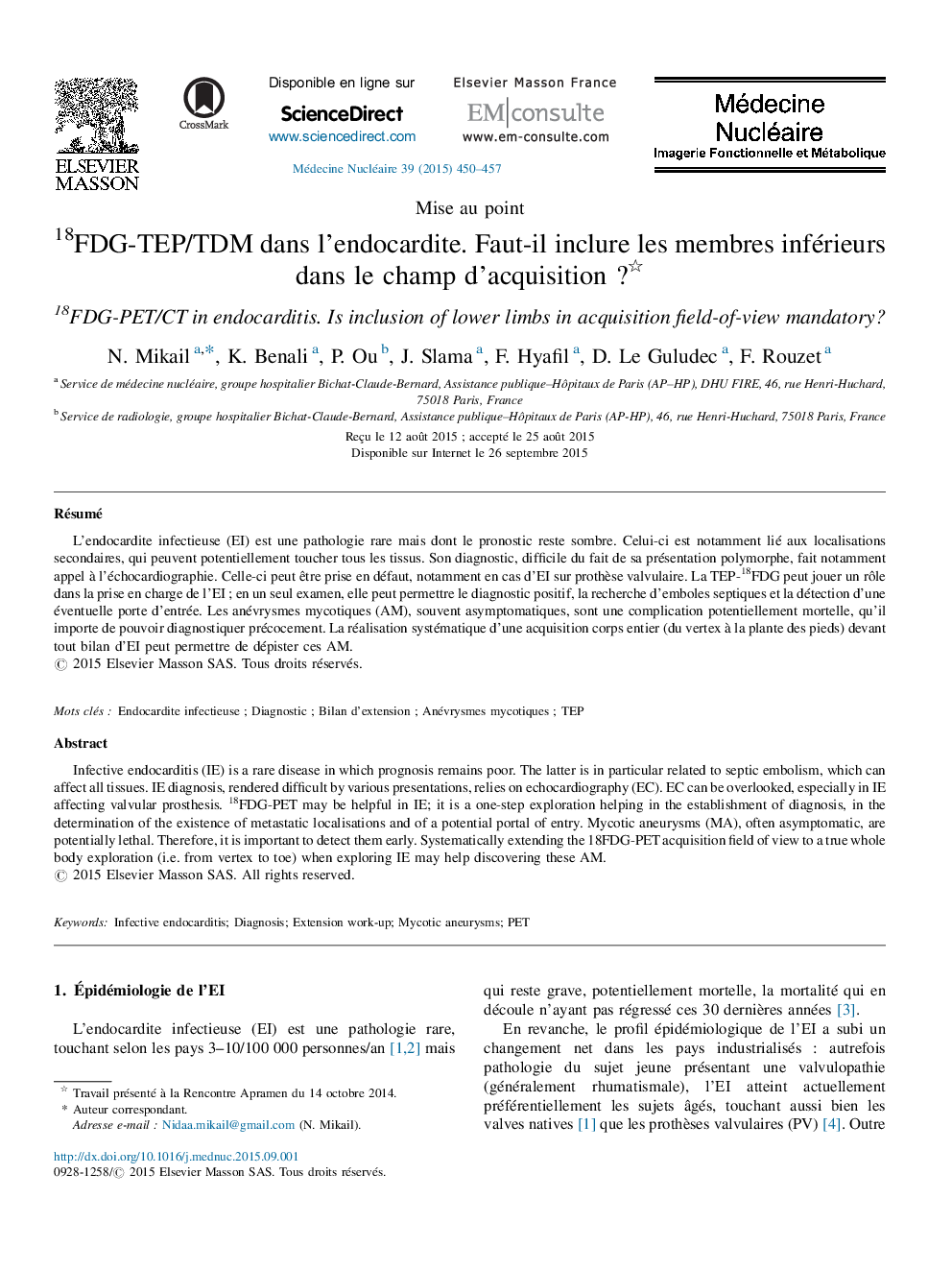| Article ID | Journal | Published Year | Pages | File Type |
|---|---|---|---|---|
| 4243548 | Médecine Nucléaire | 2015 | 8 Pages |
RésuméL’endocardite infectieuse (EI) est une pathologie rare mais dont le pronostic reste sombre. Celui-ci est notamment lié aux localisations secondaires, qui peuvent potentiellement toucher tous les tissus. Son diagnostic, difficile du fait de sa présentation polymorphe, fait notamment appel à l’échocardiographie. Celle-ci peut être prise en défaut, notamment en cas d’EI sur prothèse valvulaire. La TEP-18FDG peut jouer un rôle dans la prise en charge de l’EI ; en un seul examen, elle peut permettre le diagnostic positif, la recherche d’emboles septiques et la détection d’une éventuelle porte d’entrée. Les anévrysmes mycotiques (AM), souvent asymptomatiques, sont une complication potentiellement mortelle, qu’il importe de pouvoir diagnostiquer précocement. La réalisation systématique d’une acquisition corps entier (du vertex à la plante des pieds) devant tout bilan d’EI peut permettre de dépister ces AM.
Infective endocarditis (IE) is a rare disease in which prognosis remains poor. The latter is in particular related to septic embolism, which can affect all tissues. IE diagnosis, rendered difficult by various presentations, relies on echocardiography (EC). EC can be overlooked, especially in IE affecting valvular prosthesis. 18FDG-PET may be helpful in IE; it is a one-step exploration helping in the establishment of diagnosis, in the determination of the existence of metastatic localisations and of a potential portal of entry. Mycotic aneurysms (MA), often asymptomatic, are potentially lethal. Therefore, it is important to detect them early. Systematically extending the 18FDG-PET acquisition field of view to a true whole body exploration (i.e. from vertex to toe) when exploring IE may help discovering these AM.
